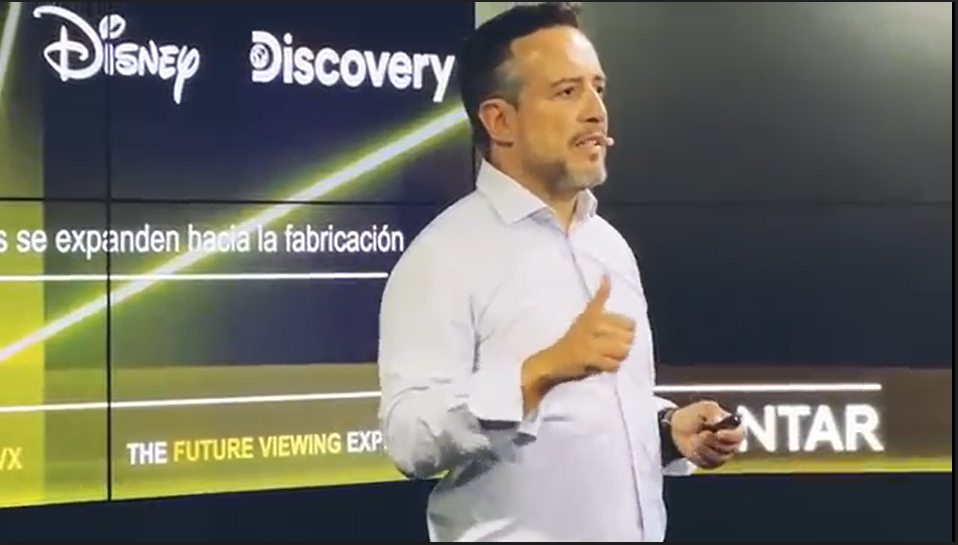Why Are TV Industry Trends Important?
TV. These are the trends that are coming
Hybrid VOD models; media companies buying more franchises; advertising on video-on-demand platforms; real measurement per person and the battle to overcome the privacy barrier in business are some of the trends present in Kantar's study 'The future viewing experience'.

Spanish households are accelerating the digital transformation of their entertainment and leisure, moving from 'traditional television' to a home with IPs, where the smart TV becomes the epicentre and, around it, a whole connected ecosystem of screens: mobile phones, tablets and computers.
63% of national households have a smart TV, making it “increasingly important to measure people, rather than devices” to reach real audiences, says Gustavo Núñez, managing director for Southern Europe of Kantar's Media Division, at the presentation of the study 'The future viewing experience' prepared together with Research the Media, on June 29.
Screen size and image resolution continue to grow as the public seeks the best experience at home, as reported by Kantar Comtech for the first quarter of 2022, which shows that in five markets (including Spain), 44% of televisions are now 45 inches or larger, while 85% use the TV to stream content. “This is already a paradigm shift. The consumer prefers, for example, the 45” television to watch content with the family.”
In this path of home entertainment, companies are investing in augmented and virtual reality applications for television. Apple is expected to launch its augmented reality TV “sooner or later.” Mark Zuckerberg, CEO of Meta (formerly Facebook), describes “a scenario in which TVs will not be physical objects, but software that will work in a metaverse.”
This new home epicentre for smart TVs also makes it necessary to give more importance to measurement, both in terms of content and advertising.

Vertical integration
As smart TV becomes the epicenter of entertainment, big media companies are betting on vertical integration and launching consumer-facing services, increasing the importance of content franchises. The goal: they try to control the entire chain, from content production to its broadcast in the home. “ Everything points to a future in which a company will own the studio, record the show and distribute it exclusively on its own VOD platform.” Take Disney, for example, as it sells 93% of the content it produces to services it owns . Warner Media and NBCUniversal are following suit.
Disney+ had 118 million subscribers in November 2021 and expects to reach 230 million by the end of 2024. Netflix already had 200 million, but its growth has stagnated “as the market becomes saturated and people’s purchasing power declines.”
Content is King
In this regard, companies will continue to invest in film franchises, such as Disney's acquisition of 20th Century Fox, as well as the sum it invested in the purchase of Pixar ($7.4 billion), Lucasfilm ($4.1 billion) and Marvel ($4 billion) . At the same time, Amazon buys MGM studios, announcing the launch of a James Bond game show.
It is not surprising that the toy and games company Hasbro is looking to expand its brands in film and television. Moreover, the success of Squid Game has shown that “national programming can be global and that the future does not have to be only Hollywood” (glocalization , i.e. local content on global platforms).
At the same time, content such as sports is already moving towards a change of model, replacing the sale of rights with a subscription approach and reaching the end user directly.
Hybrid VOD models
The traditional model is making a comeback. Video-on-demand (VOD) platforms are now recognising the importance of linear offerings, particularly as a way of promoting and displaying content. Netflix has launched the linear Netflix Direct channel in France, for example, while YouTube offers live TV and sporting events in the US.
The traditional strategy of free-to-air television, which launches episodes of series or programmes on a weekly basis, has also reached the platforms. This “gives the user the chance to get hooked on watching other content on the platform. They have realised that it costs more to get a new subscriber than to retain their existing subscribers , and the new consumer, taking into account the context of price increases , has to choose, with an average of 2.4 platforms in national households. There is more and more competition, because they compete with the shopping basket,” says the general manager for southern Europe of Kantar’s Media Division.
This context of inflation and high competition from platforms also predicts the arrival of advertising on VOD. “ 44% of platform users would accept advertising if the price were lowered , as long as it does not interrupt the broadcast of their content,” continues Gustavo Núñez. Disney+ is expected to introduce a lower-priced subscription plan with advertising, while Netflix is “never” announcing the arrival of its own model with advertising this year, given the drop in subscriptions.
The introduction of advertising makes it necessary to have rich and independent data to help with advertising sales, media planning and commerce, with “precise and individualized measurement to know what works best, so you have to know who is subscribed and what they see.”
The age of consent
The challenges of the post-cookie world are compounded by ongoing and potential “privacy wars” between companies seeking to monetise user data and those prioritising customer privacy. New European legislation designed to increase competition.
Thus, in this new home full of screens and IPs, smart TVs are getting closer to the world of the Internet, so user consent will be key in this new era of more segmented advertising. The challenge in this context will be to overcome the great “privacy barrier and to be able to process data to convert it into valuable actions for advertisers, agencies … Cookies are going to disappear, the panel is going to become important”, so “having this first-party data axis will be key, integrating it and making sense of it”.
Finally, the day ended with a round table with Begoña Gómez , technical director of aea; Marta Rojo, director of audience research and marketing at Atresmedia Publicidad; Maribel Vivancos, value & delivery director in Spain at Group M; Iñaki Sánches , head of media sales at DAZN; Gustavo Núñez (Kantar); and moderated by Mariayun Martín de los Ríos, commercial director of audiences for Spain at Kantar. The imminent arrival of the hybrid model was discussed, as well as the lack of actors who know “how important it is to share data, homogeneity is essential”.
Comments
Post a Comment